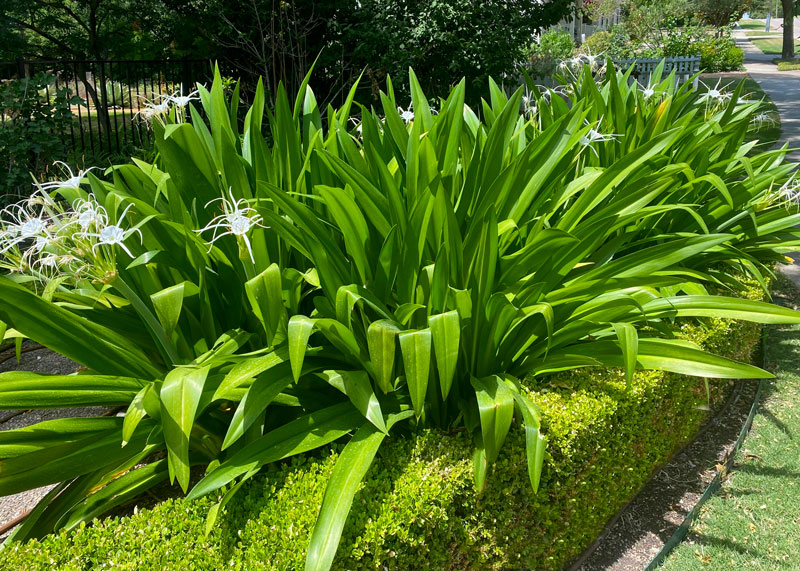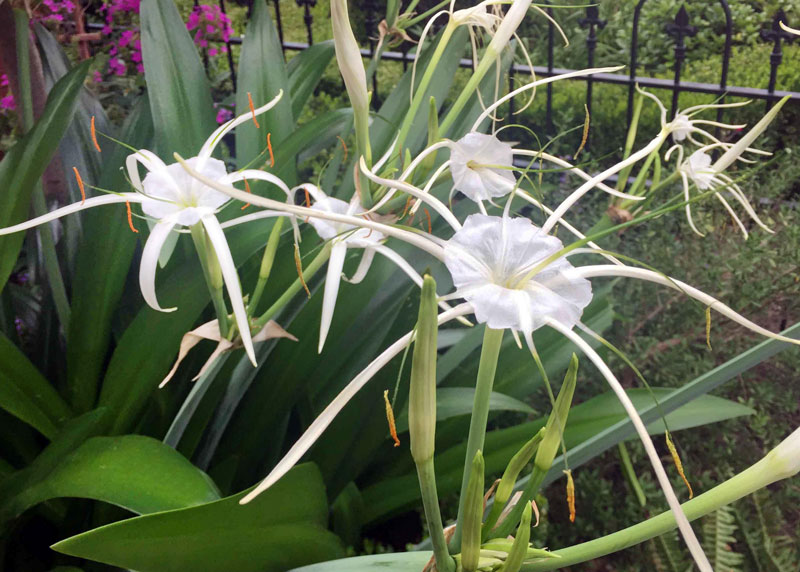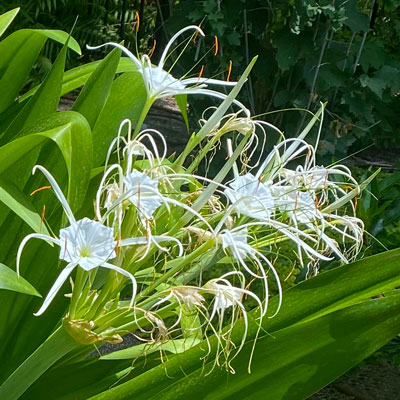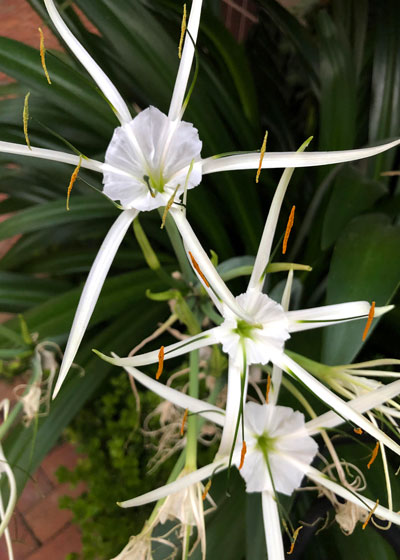‘Tropical Giant’ Spider Lily

Steve Huddleston from the Fort Worth Botanic Garden and BRIT showcases a particular plant each Sunday morning at 8:06 as I open up my program on WBAP 820AM. This past Sunday his choice was ‘Tropical Giant’ spider lily. We talked about how stunning it is in Texas landscapes when it comes into bloom. Still, there were people who were confusing it with the red Lycoris spider lilies. Then, after church, I saw it in bloom in McKinney. That’s when I decided to feature it here.
This is a beautiful heirloom bulbous plant that you’ll find growing in older neighborhoods across Texas and the South in general. Its foliage is beautiful enough, but when the plant jumps into bloom each year in mid-summer it yells out for attention. Let me give you its main points.

What you’ll want to know…
• Common names (there are many):
‘Tropical Giant’ spider lily, Peruvian daffodil, Ismene, basket flower, sea daffodil, among others.
• Scientific name: Hymenocallis caribaea ‘Tropical Giant.’

• Perennial bulb.
• Hardiness Zones 7-10.
• Full sun, although shade in afternoon is appreciated.
• Tolerant of most soils, but highly organic soils that are uniformly moist are best. Tolerates wet soils well. Good water garden plant.

• Flowers: Fragrant, large white, to 6-8 inches across. White daffodil-like cups and long, spidery petals and sepals.
• Attracts hummingbirds.
• Propagated: Division.
